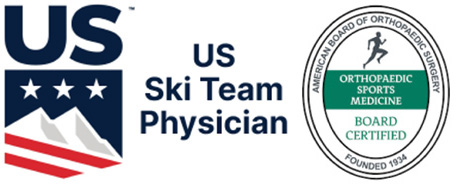If you are someone who enjoys being physically active or playing sports, you may have heard of orthopedics before. This is a specific area of medicine known for treating bones, joints, tendons, nerves and ligaments found within the musculoskeletal system. When these parts of the body become injured or overtaken by arthritis, it can limit your mobility and make daily tasks more challenging. That is why at Schumacher Orthopedics, we treat a variety of orthopedic injuries and conditions to help you get back to enjoying the lifestyle you love.
Common Orthopedic Injuries and Conditions We Treat
Arthritis
Treatment: Our orthopedic surgeon and team have a variety of options to treat arthritis including sports medicine, corticosteroid shots and platelet-rich plasma injections.
Broken Ankle
- Swelling
- Bruising
- Tender to Touch
- Intense Pain
- Your ankle feels “out of place”
- Difficulty putting any weight on your foot
Treatment: The first thing you should do if you suspect you have broken your ankle is perform the RICE method (rest, ice, compression, elevation) while you wait for your appointment. When you come in, Dr. Gregory Schumacher will examine your ankle with diagnostic tools such as an X-ray or an MRI to determine the severity of the break. If it is severe, you may require surgery to help you get back on your feet.
Ankle Impingement (Arthroscopic Correction)
Signs to watch for include:
- Swelling
- Limited motion
- Feeling pain as you bend your toes down or raise your ankle
Treatment: Many cases of ankle impingement can be treated with nonoperative treatments such as physical therapy and a pain reliever. However, if Dr. Gregory Schumacher finds problems with the bone and tissue in your ankle, he may recommend an arthroscopic correction to surgically remove any tissue that is causing blockage and irritation.
High Ankle Sprains
- Swelling and bruising above the ankle
- Difficulty walking on your toes
- Pain when you move around your foot
Treatment: Many cases of high ankle sprains are treated through self-care at home with the RICE method (rest, ice, compression, elevation). However, if you have significantly injured ligaments that have caused a separation between the tibia and fibula bones, our orthopedic surgeon may need to perform surgery.
Sprains
- Swelling and bruising
- Tenderness and pain
- Difficulty moving around the joint
Treatment: If you have a sprain, our orthopedic surgeon may have you wear a brace or splint, perform exercises to check the mobility of the sprain, or encourage you to keep icing the affected area.
Fractures and Complex Breaks
Treatment: If you have a fracture or complex break, our orthopedic surgeon will have you wear a plaster or fiberglass cast to correct the position of the bones to allow them to heal. Dr. Gregory Schumacher may also perform external or internal fixation to hold the bones together with screws.
Stress Fractures
Signs you may have a stress fracture include:
- Pain
- Swelling
- Tenderness when touching the bone
Treatment: To properly treat a stress fracture, our orthopedic surgeon and team will need to perform an MRI or capture an X-ray to determine the severity of the crack. Afterward, Dr. Gregory Schumacher may have you wear a cast to help you recover and encourage you to perform less strenuous physical activities. You may need surgery if necessary.
Broken and Dislocated Bones
- An out-of-place joint or limb
- Extreme pain and discomfort
- Bruising or redness
- Possible bleeding
- Difficulty moving your limb
Treatment: Our orthopedic surgeon and team can treat a broken and dislocated bone through either surgical or nonoperative treatment.
Shin Splints
- Sharp pain and tenderness
- A lasting sore spot
Treatment: A shin splint can either be treated with nonoperative measures, such as the RICE method (rest, ice, compression, elevation), supportive shoes and pain relievers, or surgical treatment. With a visit to Schumacher Orthopedics, our orthopedic surgeon will perform an examination to determine which is right for you.
When To Seek Care From an Orthopedic Surgeon?
You should seek care if you are experiencing:
- Persistent pain
- Limited mobility
- Difficulty performing daily tasks
To schedule an appointment to meet with our orthopedic surgeon for general orthopedics in Anchorage, Alaska, please contact Schumacher Orthopedics at 907-206-5086.


 1389 Huffman Park Dr., Unit 210, Anchorage, AK 99515
1389 Huffman Park Dr., Unit 210, Anchorage, AK 99515 907-206-5086
907-206-5086 907-600-5083
907-600-5083